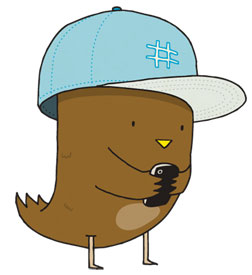“I ACTUALLY think most people don’t want Google to answer their questions,” said the search giant’s chief executive, Eric Schmidt, in a recent and controversial interview. “They want Google to tell them what they should be doing next.” Do we really desire Google to tell us what we should be doing next? I believe that we do, though with some rather complicated qualifiers.
Science fiction never imagined Google, but it certainly imagined computers that would advise us what to do. HAL 9000, in “2001: A Space Odyssey,” will forever come to mind, his advice, we assume, eminently reliable — before his malfunction. But HAL was a discrete entity, a genie in a bottle, something we imagined owning or being assigned. Google is a distributed entity, a two-way membrane, a game-changing tool on the order of the equally handy flint hand ax, with which we chop our way through the very densest thickets of information. Google is all of those things, and a very large and powerful corporation to boot.
We have yet to take Google’s measure. We’ve seen nothing like it before, and we already perceive much of our world through it. We would all very much like to be sagely and reliably advised by our own private genie; we would like the genie to make the world more transparent, more easily navigable. Google does that for us: it makes everything in the world accessible to everyone, and everyone accessible to the world. But we see everyone looking in, and blame Google.
Google is not ours. Which feels confusing, because we are its unpaid content-providers, in one way or another. We generate product for Google, our every search a minuscule contribution. Google is made of us, a sort of coral reef of human minds and their products. And still we balk at Mr. Schmidt’s claim that we want Google to tell us what to do next. Is he saying that when we search for dinner recommendations, Google might recommend a movie instead? If our genie recommended the movie, I imagine we’d go, intrigued. If Google did that, I imagine, we’d bridle, then begin our next search.
We never imagined that artificial intelligence would be like this. We imagined discrete entities. Genies. We also seldom imagined (in spite of ample evidence) that emergent technologies would leave legislation in the dust, yet they do. In a world characterized by technologically driven change, we necessarily legislate after the fact, perpetually scrambling to catch up, while the core architectures of the future, increasingly, are erected by entities like Google.
Cyberspace, not so long ago, was a specific elsewhere, one we visited periodically, peering into it from the familiar physical world. Now cyberspace has everted. Turned itself inside out. Colonized the physical. Making Google a central and evolving structural unit not only of the architecture of cyberspace, but of the world. This is the sort of thing that empires and nation-states did, before. But empires and nation-states weren’t organs of global human perception. They had their many eyes, certainly, but they didn’t constitute a single multiplex eye for the entire human species.
Jeremy Bentham’s Panopticon prison design is a perennial metaphor in discussions of digital surveillance and data mining, but it doesn’t really suit an entity like Google. Bentham’s all-seeing eye looks down from a central viewpoint, the gaze of a Victorian warder. In Google, we are at once the surveilled and the individual retinal cells of the surveillant, however many millions of us, constantly if unconsciously participatory. We are part of a post-geographical, post-national super-state, one that handily says no to China. Or yes, depending on profit considerations and strategy. But we do not participate in Google on that level. We’re citizens, but without rights.
Much of the discussion of Mr. Schmidt’s interview centered on another comment: his suggestion that young people who catastrophically expose their private lives via social networking sites might need to be granted a name change and a fresh identity as adults. This, interestingly, is a matter of Google letting societal chips fall where they may, to be tidied by lawmakers and legislation as best they can, while the erection of new world architecture continues apace.
If Google were sufficiently concerned about this, perhaps the company should issue children with free “training wheels” identities at birth, terminating at the age of majority. One could then either opt to connect one’s adult identity to one’s childhood identity, or not. Childhoodlessness, being obviously suspect on a résumé, would give birth to an industry providing faux adolescences, expensively retro-inserted, the creation of which would gainfully employ a great many writers of fiction. So there would be a silver lining of sorts.
To be sure, I don’t find this a very realistic idea, however much the prospect of millions of people living out their lives in individual witness protection programs, prisoners of their own youthful folly, appeals to my novelistic Kafka glands. Nor do I take much comfort in the thought that Google itself would have to be trusted never to link one’s sober adulthood to one’s wild youth, which surely the search engine, wielding as yet unimagined tools of transparency, eventually could and would do.
I imagine that those who are indiscreet on the Web will continue to have to make the best of it, while sharper cookies, pocketing nyms and proxy cascades (as sharper cookies already do), slouch toward an ever more Googleable future, one in which Google, to some even greater extent than it does now, helps us decide what we’ll do next.
William Gibson is the author of the forthcoming novel “Zero History.”





